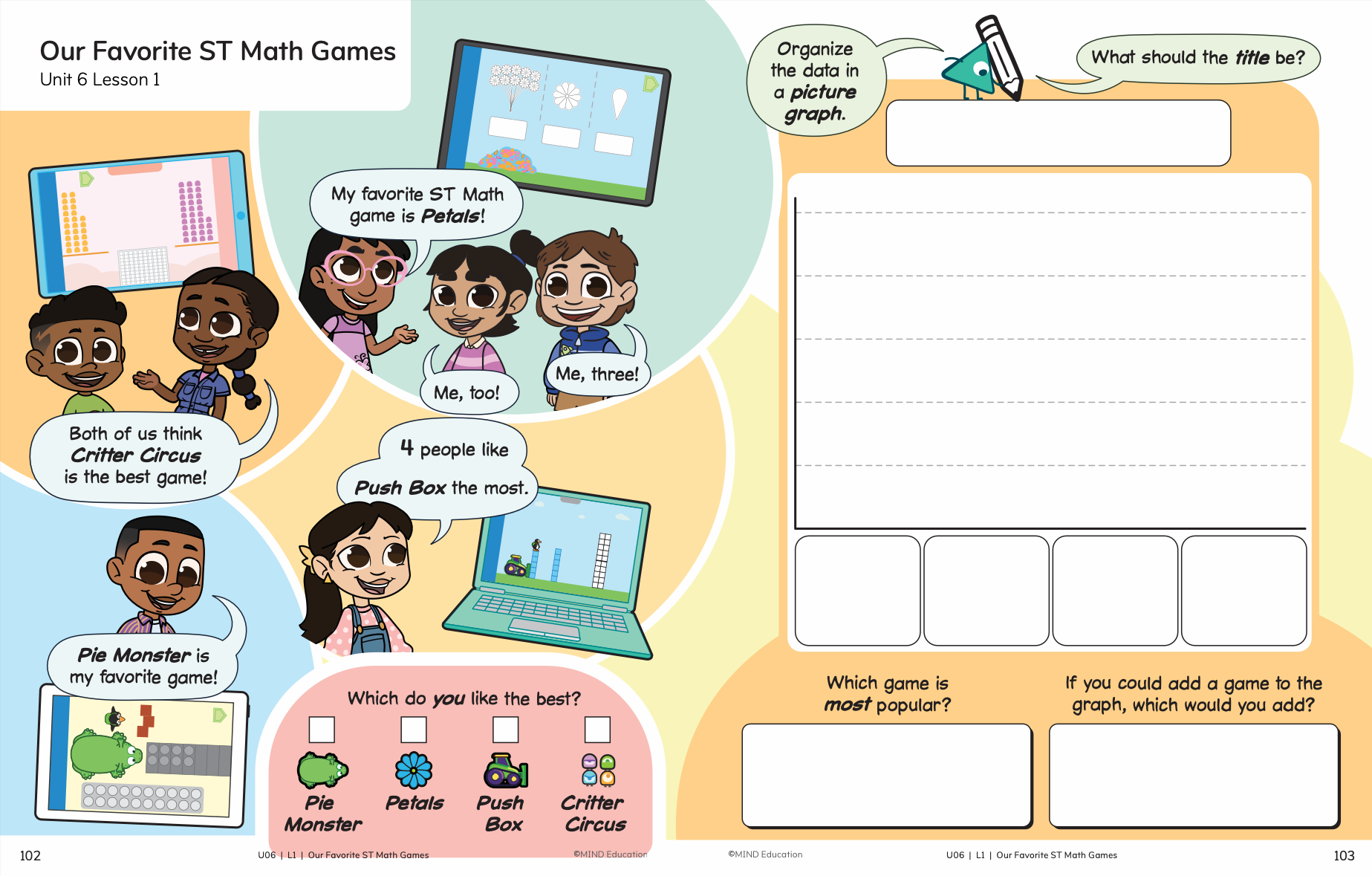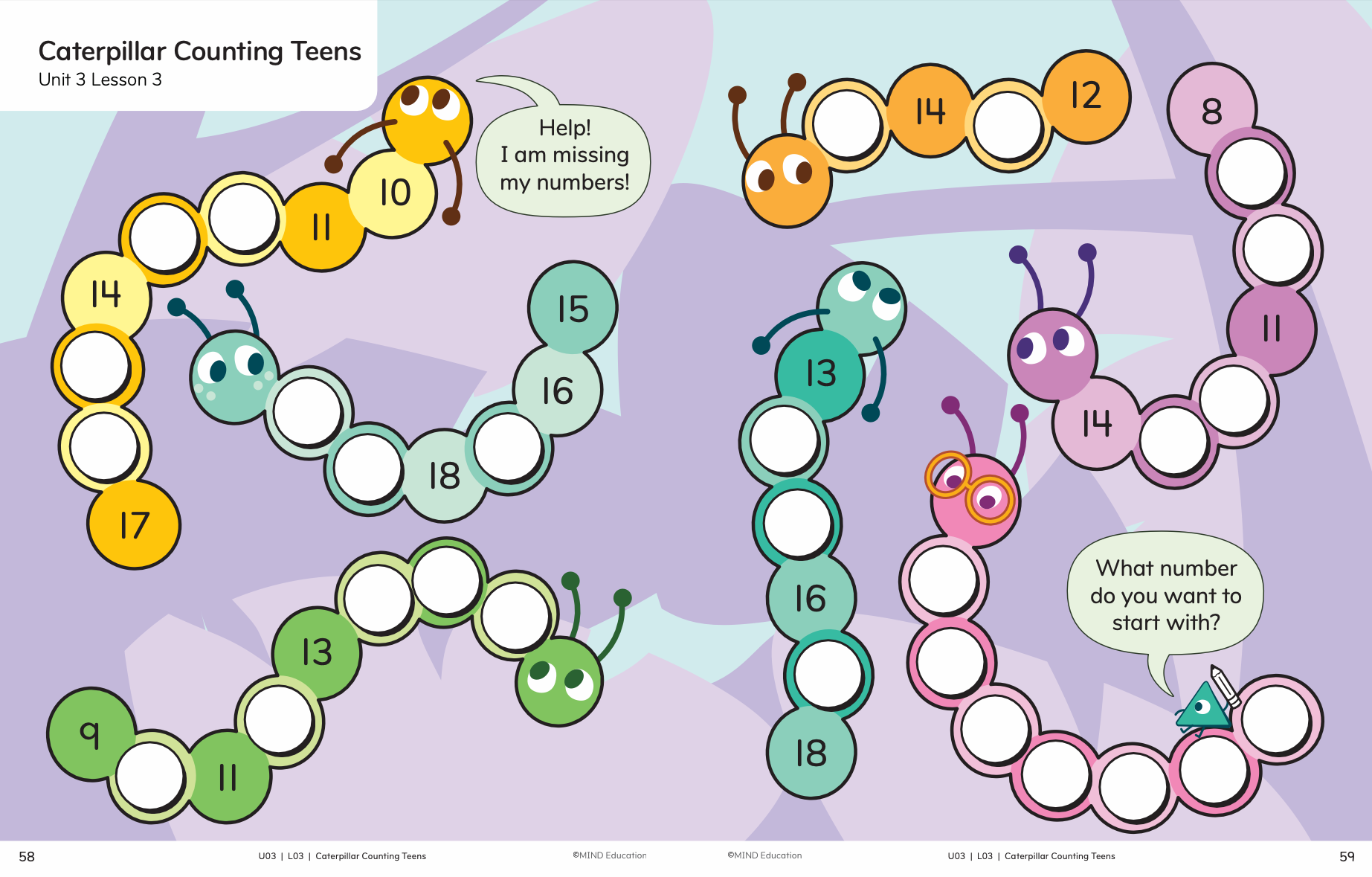Layout and Visual Design
I have had a fascination with composition crafting for most of my career, but it became my whole professional identity in 2021. That was when my career shifted from game animation to designing for print. The cool thing about going into graphic design from an animation background is that I bring those animation principles into what is typically considered a static design.
This portfolio will mainly be about my work on InsightMath’s Playbook, the heart of the InsightMath curriculum and where it all started. We’ll go through pages I designed, pages I collaborated with other artists on the team to complete, and pages that I edited.
Courtney’s Keywords!
-
The goal of inclusive design is to consider the full range of diverse perspectives: culture, language, ability, age, gender, socioeconomic status, and more. We focus on designing for accessibility from the beginning, rather than add on accommodations last.
This creates richer experiences with a broader audience. It signals to everyone that they are welcome and that their experiences matter.
And it leads to more empathetic design, too — we can ask better questions and make stronger products as a result.
If you design for the margins, everyone benefits.
-
Cognitive load refers to the total amount of mental effort being used in a person’s working memory at any given time.
When we’re learning something new or processing information (like reading instructions, solving a math puzzle, or navigating a layout) our brains only have a limited amount of space to hold and work with that information. That “space” is what cognitive load measures.
As a designer, (especially for education,) my goal is to reduce extraneous load so my audience can spend their energy on the important stuff.
-
Schemas are mental frameworks (I like to think of them as storage boxes) we use to organize information.
When you learn something new, your brain tries to do one of two things:
Fit it into an existing schema (like adding a new item to an storage box), or
Build a new schema if the information doesn’t fit anywhere yet.
By activating what a person already knows, we can give new information a place to land while reducing cognitive load. Good design = connecting new ideas to the right schema.
-
Play is a powerful cognitive tool for learning: it’s a safe space to explore new ideas and to grow. Learners are more likely to try new things and embrace failure as a learning tool rather than view it as a reflection of who they are.
I design fun, playful material that builds confidence and encourages play as much as possible. To colleagues, I describe it as a bit ‘o whimsy!
InsightMath: Playbook
Designed by Me
InsightMath: Playbook
Collaborations
Playbook went through several iterations in the 4+ years it was being designed. This meant that pages were oftentimes revisited and totally redesigned, while others went through color updates and small layout tweaks, oftentimes by a different artist from the original.
Also, as the point person for Playbook, I would take on special-case overhauls (problem solving based off of feedback and pages with major changes due to a shift in requirements). (It’s similar to my work as a layout editor, but too large of a departure from the original work to qualify for my editor section of this portfolio.)
InsightMath: Playbook
Layout Editing
As a layout editor, my focus was on 5 major points of review:
story support and visual narrative,
mathematical clarity,
accessibility standards,
cognitive load,
and interpage cohesion.
As senior layout editor, I’ve edited over 1.000 pages! Here is a small sampling of pages that benefited from my edits. Below, you can see the original version and the post-edits version. I’ll go into specific changes for some of these.
Story support: The major changes for Beadwork Distribution happened in panel 1.
I started with the background: this character has a workshop associated with her, and she is making a regalia, so I placed her in this room to immerse the reader better.
Next, I did some rearranging. Dani (the character) and her story balloons (more on that in the next bullet) move to the left to be read first. Then the plan for Dani’s regalia and her math clues are read second, to the right.
The original had the story and first math clue in the same balloon cluster. I remade these balloons so that there was a story cluster and a math cluster.
The original page credit goes to Lime Robertson.
Visual Narrative: let’s talk panels.
We use panels as homes for math puzzles to live. Anything within a panel should support that math puzzle. For this spread, I separated the bottom panel to reinforce that these were two separate math puzzles.
We have a few tricks with our panel design: panels shaped as if they connect together suggest that those two panels are related, either in story or in math clues, while panels with rounded corners are often used to enforce a standalone story. Because of how similar the puzzles are to others, I chose to round off the corners of the panels on this spread to drive further separation from each panel and its neighbors.
The original page credit goes to Lime Robertson.
Accessibility
While there are a number of edits to the second version, the ones I want to focus on here are all about text visibility. The blue text was originally used to align it with the flight path of the Monarch butterflies, but it was difficult to read in practice. Changing it to black improved visibility.
The original page credit goes to Lime Robertson.
Cognitive Load
Speech balloons can make or break a layout! This spread is packed full of information, so to reduce the visual overwhelm, I redesigned many of the balloons to reduce the cognitive load.
This also impacted story support. Our character here is telling a story in the past tense, and it made more sense to remove his balloon tails, since his past self wouldn’t be the one sharing it. This removal of tails also removed some layout flow, but it reduced extraneous detail, so it was worth it.
The original page credit goes to Blake Lannom.
The original page credit goes to Blake Lannom.
Courtney’s Other Portfolios






















